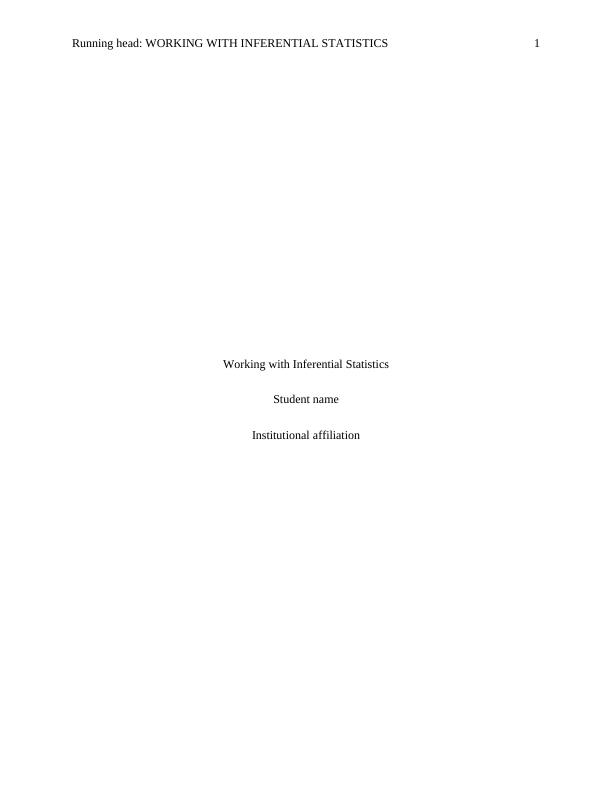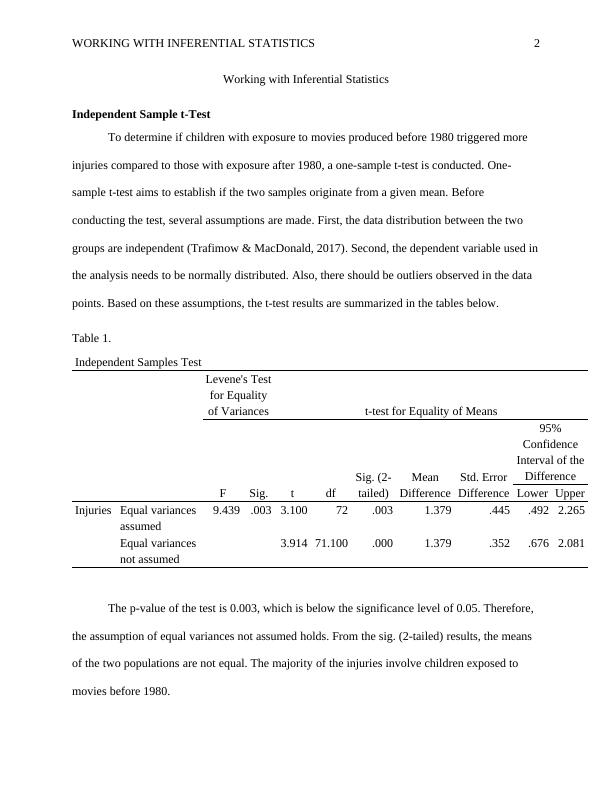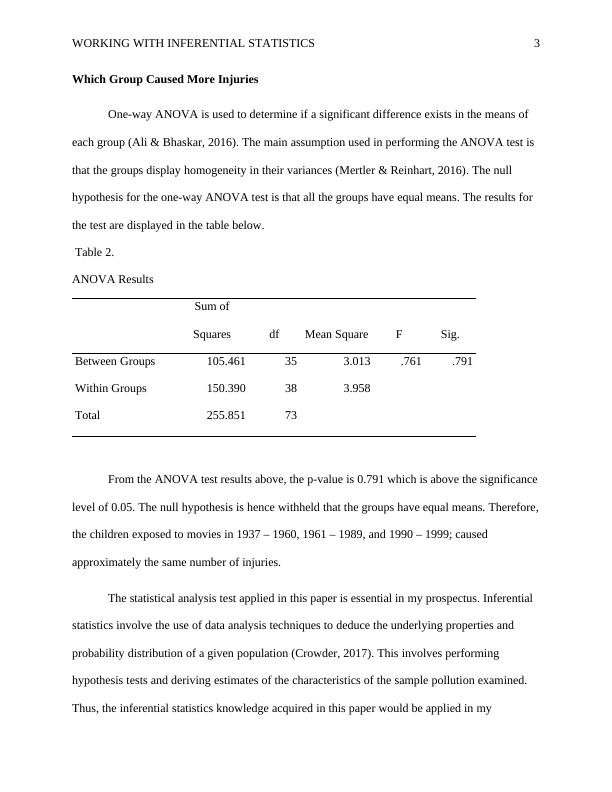Working with Inferential Statistics
Added on 2022-11-16
7 Pages879 Words480 Views
End of preview
Want to access all the pages? Upload your documents or become a member.
Inferential Analysis on Carbon Emission Reduction in Developed and Developing Countries
|8
|2537
|154
Assessment 3 Risk and Technology
|14
|3567
|170
Work Commitment Nurses - Assessment 2
|25
|4924
|448
Data Analysis and Hypothesis Testing for Carbon Emission and Climate Change Integration in Business Strategy
|15
|3225
|463
Statistics Study Material
|8
|1143
|97
Test for Difference in Variability in Waiting Times in Bank 1 and Bank 2
|5
|708
|36



